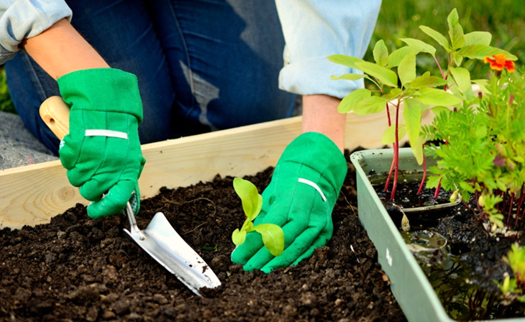Eco Gardening
Choosing Plants for Eco-Gardening
Choosing plants for eco-gardening is an important part of any type of gardening. Not only are the plants healthier, they are also more useful to you and your yard. When it comes to the plants that you use in your garden, the first thing that probably comes to mind are the flowers. However, there are a lot more plants that you should have in your garden. Here is a short list of some of the other plants that you might want to consider.
1. Choose Plants that Will Complement Each Other
It is very important that you choose plants that will complement each other and those that will not be a hindrance to the performance of your eco-gardening activities. It is best that you start off with the plants that will complement each other as well as those that will not grow too fast.
2. Consider the Availability of Space
First, look at the size of the garden. Determine how much space you have available. Take into consideration the size of the plants that you plan on growing. Do not choose plants that take up an excessive amount of space just because you can. This will make your garden look crowded and will take up valuable working space.
3. Consider the Budget
Another thing to consider while choosing plants for eco-gardening is your budget. How much do you want to invest in your garden? Would you like to include some exotic plants or would you prefer plants that are more common in your area? Choosing the plants for eco-gardening depends primarily on the kind of garden you are planning to set up. Some plants are more suitable for particular kinds of gardens than they are for general gardens.
4. Choosing Plants According to Climate
If you are someone who has a large garden that needs a lot of sunlight, then you may want to consider a plant that will grow well in that kind of climate. You can buy plants that will grow well in a variety of climates if you look around at your local nursery. Some of these plants include Morning Glory, Creeping Mazus, Pennyroyal, Sweet Pea, Tulip Sunflower, Sedum Autumn Joy, and Green Senna. All of these plants will be more useful to you if you have an area of your gardening that gets a lot of sunlight and that doesn’t have a lot of temperature fluctuations.
5. Choosing Water Loving Plants
Next, if you are someone who enjoys water gardening, then you want to have plants that will grow well in a lot of water. This means you need to look at the different kinds of flowers that can grow well with this. One of the easiest plants to maintain is the Water Lilies. They don’t need much attention, and they can live in shallow water or deep water. Other plants such as the Water Hyacinth can be planted right in the middle of your garden and not need much extra care.
6. Self-Supporting Plants
Another type of plant that you might want to consider is a plant that is self-supporting. These plants are a bit different than traditional plants because they do not need the help of roots in order to grow. If you have an area where you do a lot of gardening and you are just starting out, you might want to consider growing some of these. However, if you have a large garden and are looking for plants that won’t cost you a lot of extra work, then you will probably want to stick to traditional plants.
7. Gardening Area
One important thing to remember when choosing plants for eco-gardening area is that it doesn’t matter what kind of plant you choose as long as it is going to be safe. You also want to think about where you are going to plant them, as well as what they will be exposed to. Sunlight is very important, as is shade.
8. Things to Avoid
You might want to avoid picking plants near other plants, as this can possibly cause damage to each plant. You should also avoid picking a plant and planting it somewhere where it could become disestablished. There are some plants that can become almost extinct if they aren’t kept in an area where they belong.
9. Time of Planting
You should consider the time of year when you plant your garden as well. If you are getting a lot of sun, then you might want to choose a plant that will grow best in this type of weather. In addition, you will also need to make sure that the climate conditions are appropriate for a certain type of plant. Different flowers will do better in different climates, so it’s up to you to find out what they are and whether or not they will do well together.
10. Conclusion
In order to make your garden an eco-friendly one, you can start by choosing plants that are friendly to the environment. Most plants use carbon dioxide, so if you want to go green in the garden, choose plants that don’t absorb carbon dioxide. These plants are also good for eating pests and bacteria that live in your soil. And be sure to choose plants that are native to your area. These will be easier to care for, and make your garden more beautiful.

